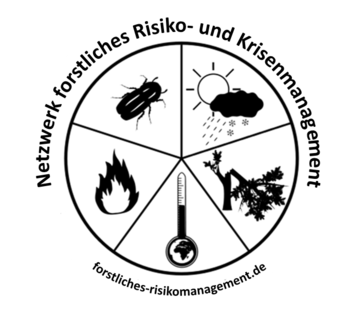Dry cracks
After particularly dry summers crack formations can appear on the lower trunk area of spruce trees (Fig 1). The length of these cracks may vary from a few centimeters up to several meters. Young stands, ages 15-30 years, are particularly affected. Factors, which at the same time allow for an above average growth, can also foster where necessary the crack formation during very dry summers. These include an average to good supply of nutrients and good soil freshness, often the change of humidity as well. A general problem of these soils is their swelling and shrinking.
Here, strong desiccation determines the inevitable breaks in the roots, which act as entry points for fungi. This can also be observed on oak trees grown in these sites (moon rings in the wood of the stump). During droughts, the water contained in the trunk acts as a transpiration reserve, when this is exhausted, its size dwindles, which can lead to cracks. This happens more often in fast-growing trees with light wood. The affected spruces are usually infected with blue stain fungi and stain red.
Measures when risk is identified
Based on findings of the FVA, the risk of crack formations cannot be significantly reduced by mild thinning and higher tree count. Also other findings have concluded that silvicultural interventions are not paramount. On sites with a latent danger of cracks caused by drying, a transition towards suitable tree species such as beech, ash or common maple, or at least a greater mixture of these species should be sought.
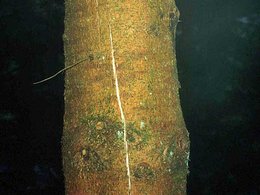
Fig. 1: Dry cracks in the lower trunk section of spruce.
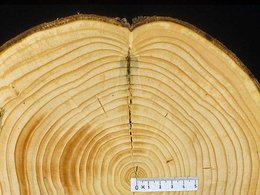
Fig. 2: Tree-rings with dry cracks.
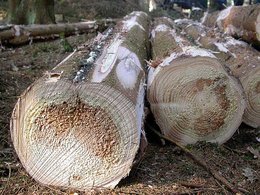
| Fig. 3: Dry cracks on spruce. (All photos: FVA/Metzler) |
Dryness caused by frost
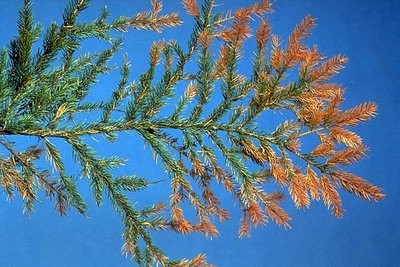
Fig. 4: Dryness caused by frost on spruce: the youngest needles dry first. (Photo: Forest Protection Switzerland, WSL)
Dryness caused by frost poses a significant risk, especially in late winter and early spring. When the surface is frozen and the pathways are icy, the transpiration continues in the roots and shoots (< 2°C) and thus results in the worsening of the water balance in plants. At elevation, where the growing season is shortened (< than three months for spruce), young needles are capable of only poorly developing a cuticular transpiration resistance, which exacerbates the wintry water losses. Potassium deficiency increases the susceptibility to dryness caused by frost.
The evaporation increases through the sun and wind. What follows are reddening and needle cast in spruce, fir, Douglas fir and mountain pine. Locations prone to frost are generally exposed hills on the northern and eastern sides as well as cold and endorheic plateaus. Sites prone to dryness caused by frost include cool damp grass cover (moor grass and wavy hair-grass), which impede the warming up of the ground and in addition cool down with transpiration, as well as areas, where cold heavy air accumulates and cannot flow off.
Measures when risk is identified
Trees, i.e. strains and sources, that are resistant to frost should be in general cultivated as well grass cover should be removed from risk prone sites. To prevent the formation of cold air accumulation, on the one hand, obstacles that disturb the runoff must be removed, and the inflow of cold air through so to say frost bar (hedge) prevented.
Sources
- Klädtke, J.; Metzler, M.; Hernandez, M. (2004): Trockenrisse an Fichten AFZ/Der Wald 59, 680-682.
- Altenkirch, W. et al. (2002): Waldschutz – auf ökologischer Grundlage. S. 235-238. Eugen Ulmer GmbH & Co., Stuttgart.
Forest Crises Management Advisory Guide
Back to the main page of the Forestry Crisis Management Advisor Guide: Overview of the different topic collections
Back to the article overview in the: Topic Collection: Water in the Forest

